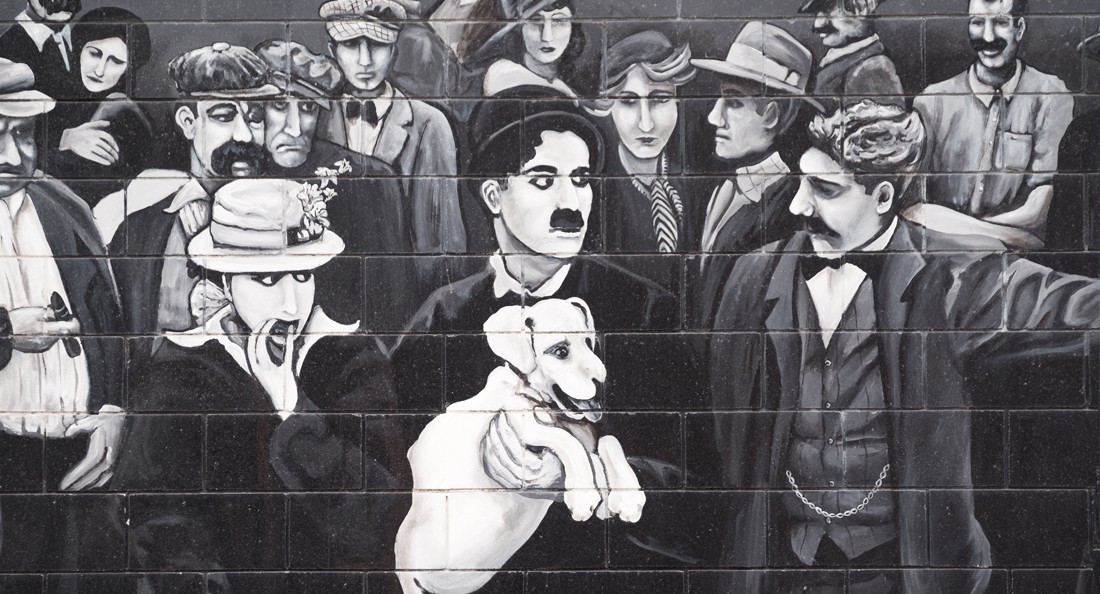Limelight to twilight
Winnipeg’s weird and wonderful place in pop culture history
Winnipeg exists in an odd cultural space; we’re self-deprecating but have fierce hometown pride. We constantly remind people that Homer Simpson, Winnie the Pooh and James Bond were based on Winnipeggers, yet our favourite song’s refrain is “I hate Winnipeg.”
But that self-deprecation comes in part from the misconception that we’re isolated from pop culture at large. When The Office sets an episode here, there’s a giddy feeling that we’re getting away with something, like we’ve briefly infiltrated the international cultural zeitgeist, like we’ve spray painted our name on the wall and snuck away before any of the important people caught us.
But this hasn’t been the case historically or recently. Whether through the vaudeville circuit, the post-war nightclub scene or film shoots, international artists have had many consequential Winnipeg encounters.
Groucho and the Little Tramp
A century ago, Winnipeg was an important stop on the touring circuit for live theatre, or vaudeville. The Pantages Playhouse, for instance, was the first stop in the 75-theatre Pantages chain stretching across the continent. Winnipeg audiences determined how performers would fare on tour. But Winnipeg vaudeville was also the setting for a consequential moment for two of the most influential comedians ever.
Before starting in film, Charlie Chaplin toured the vaudeville circuit, playing Winnipeg five times between 1911 and 1913. Chaplin cut his teeth in the English music halls scene (Britain’s counterpart to vaudeville), and his final Winnipeg performance, A Night in a London Club, brought English comedy to North American audiences. The week-long engagement began Aug. 4, 1913 at the Empress Theatre (now the empty lot between Main Street and Old Market Square).
But Chaplin’s mind was elsewhere. Between shows, from his hotel room at La Claire Hotel (now the Windsor Hotel), he wrote a letter to his brother Sydney to say he was considering leaving theatre behind to pursue a career in movies.
Charlie Chaplin's 1913 letter to his brother, Sydney, stating he was going into films.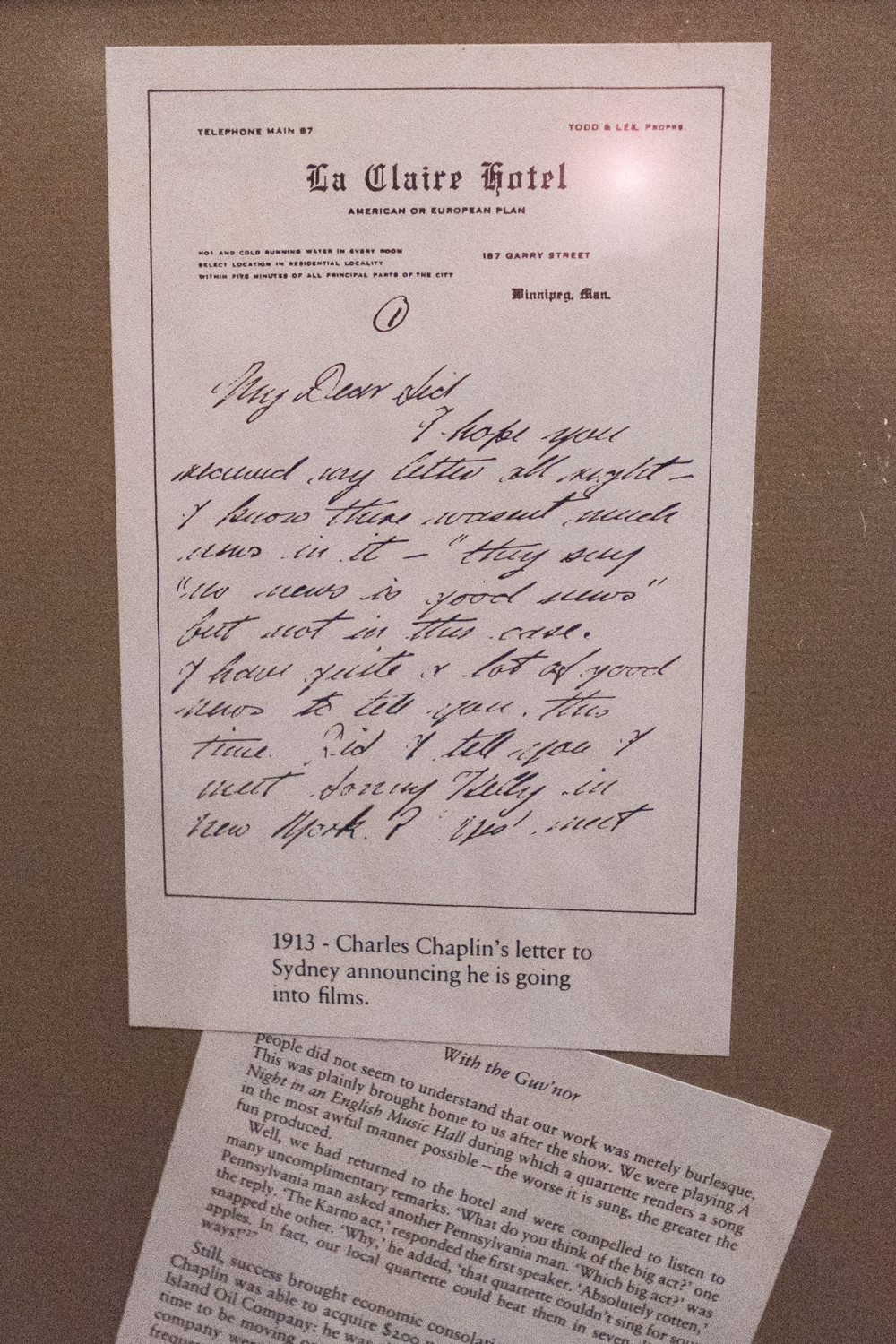
By sheer coincidence, another touring comedy troupe were in Winnipeg that week. The Marx Brothers were on the Pantages circuit and found themselves here on a three-hour layover between Duluth and Calgary. Julius “Groucho” Marx left the train station to walk down Main Street and heard laughter coming from the Empress. He stepped in to see Chaplin onstage and was floored by his talent.
Marx excitedly returned to the depot, telling his brothers what he’d seen.
“I told them I had just seen a great comic,” Marx recalled in his memoirs. “I then penguin-walked around the depot, imitating him as best I could. By the time I finished raving about his antics my brothers could hardly wait to see him.”
A month later, the Marxs’ and Chaplin’s tours finally crossed paths again, on Sept. 8, 1913 in Vancouver. Groucho recalled that, after weeks of raving about Chaplin’s talents, his brothers had grown skeptical, but “then he appeared (onstage), and in less than five minutes they were willing to concede that he was everything I had said, and more.”
The Marx Brothers met Chaplin in his dressing room after the show. The contents of Chaplin’s letter to Sydney were still weighing on his mind. Chaplin told them that he’d been offered a deal with Keystone Studios, but he was reluctant to take it; he’d seen some Keystone pictures, which he dismissed in his autobiography as “a crude mélange of rough and rumble.”
“Why not?” asked an astonished Groucho. “Don’t you like money?”
Perhaps Groucho’s question made a difference. By the end of the month, Chaplin signed with Keystone. February 1914 saw the release of his first films and the debut of his iconic Little Tramp character. For the Marxs’ part, their first film hit came with 1929’s The Cocoanuts, making them comedic icons in their own right.
Sherlock Holmes and séances
When Sir Arthur Conan Doyle visited Winnipeg in 1923, he’d tired of his reputation as a literary giant. The creator of Sherlock Holmes had, perhaps ironically, dedicated himself to preaching the cause of “spiritualism,” a religious movement which claimed the ability to communicate with the “spirit world.” It was this that brought Doyle here, on a North American speaking tour to educate the public on his experiences with ghosts, fairies and other psychic phenomena.
Doyle certainly wasn’t alone in his beliefs; Winnipeg was home to the then-secret “Hamilton Circle,” a group of spiritualists lead by MLA T.G. Hamilton and the medium Elizabeth Poole. While the Hamilton Circle’s spiritual practices would later become more public (their photographs of “ectoplasmic apparitions” can be viewed online in the University of Manitoba Archives), they still operated behind closed doors in 1923.
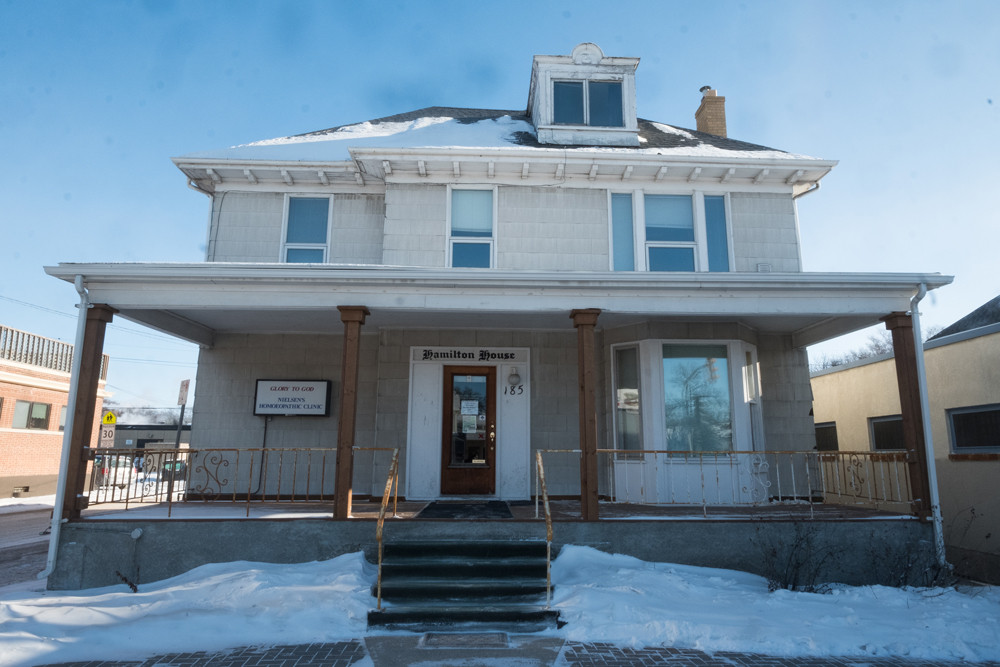
Hamilton House, at 185 Henderson Hwy., was the site of many psychic experiments during the early 20th century.
When Doyle stepped off the train at Union Station on July 1, his first stop was to Hamilton’s “circle for psychical research.” He wrote in his diary about the séance he attended, which involved Poole violently levitating a table “like a restless dog in a kennel” and supposedly channeling the spirit of Doyle’s favourite author, Robert Louis Stevenson.
Doyle’s visit wasn’t entirely dedicated to spiritualism. He was interviewed by local press, attended literary meetings and even found time for a baseball game. But his lecture at the Walker Theatre (now the Burton Cummings) focused entirely on the spiritual, and he still found time to attend a spiritualist baptism.
Doyle died in 1930, but according to the Hamilton Circle, he returned to Winnipeg. They claimed to have summoned his spirit multiple times after his death. They even produced photos of “Doyle” appearing in clouds of ectoplasm, which the Manitoba History journal called “so obviously fraudulent … that one must question either the judgment or sincerity of Hamilton and his circle.”
Bob Newhart vs. Madison Avenue Bob Newhart had a much better run in Winnipeg than in Windsor on an early tour in 1960.
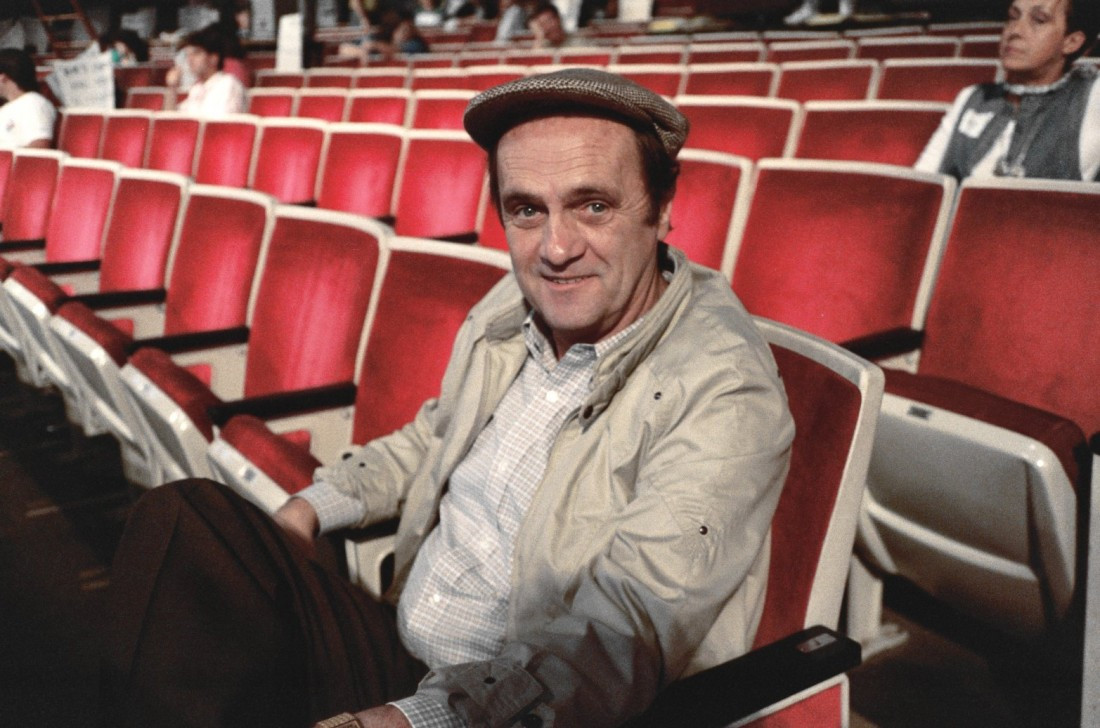
Bob Newhart’s first album, 1960’s The Button-Down Mind of Bob Newhart, spent 14 weeks at No. 1 on the Billboard album charts and won Grammys for Album of the Year, Best New Artist and Best Comedy Performance - Spoken Word. But in a 2014 interview with Marc Maron, Newhart spoke of his career’s rocky start and credited an early Winnipeg gig with convincing him not to quit comedy.
Newhart’s iconic routines involving one-sided telephone calls were originally written to be performed as a duo, but he was left solo when his intended partner left town for a job offer. When a local DJ landed him a recording contract with Warner Bros., it took the label a year to find a nightclub to book a comedian who’d never performed live.
In Feb. 1960, Newhart finally recorded The Button-Down Mind at the Tidelands nightclub in Houston, Texas. In the months between the album’s recording and release, he was booked for some road gigs: one week in Windsor, Ont., another in Winnipeg.
“I did two shows a night for a week (in Windsor),” Newhart told Maron. “Canadians are very nice people. They didn’t yell anything. They’d occasionally look up and say, ‘Oh, he’s still on.’
“Then I went to another club in Winnipeg and it went great! Because of Windsor, I was thinking of going back to accounting, because I wasn’t going to spend the rest of my life standing on stage with no one paying any attention to me and not laughing.”
Newhart’s early material may seem tame by modern standards, but it had a sharp edge. He satirized the heartlessness of the military, the advertising industry and Cold War politics. Perhaps it says something about Winnipeg’s character that we responded to this cutting material while others didn’t.
Newhart was vindicated when the album was released in May and his comedy career took off.
“So, you learned a lesson there?” Maron asked Newhart of his differing Canadian audiences.
“Yeah,” Newhart said. “I’m not sure what it is.”
The way we were
In July 1961, Barbra Streisand was a 19-year-old Brooklynite whose only onstage experience had been in Greenwich Village, singing in gay bars and opening for Phyllis Diller. She was just beginning to build a niche Manhattan fanbase when she was booked for a two-week stint at the Town n’ Country Restaurant on Kennedy Street in Winnipeg.
Streisand made $300 a week and couchsurfed in the homes of Winnipeggers she barely knew. Her sets at the Town n’ Country garnered a mixed reception. A favourable review in the Free Press praised her, but wondered whether Winnipeg audiences would share that enthusiasm.
James Bond's character was based on Sir William Stephenson, whose statue stands on Memorial Avenue.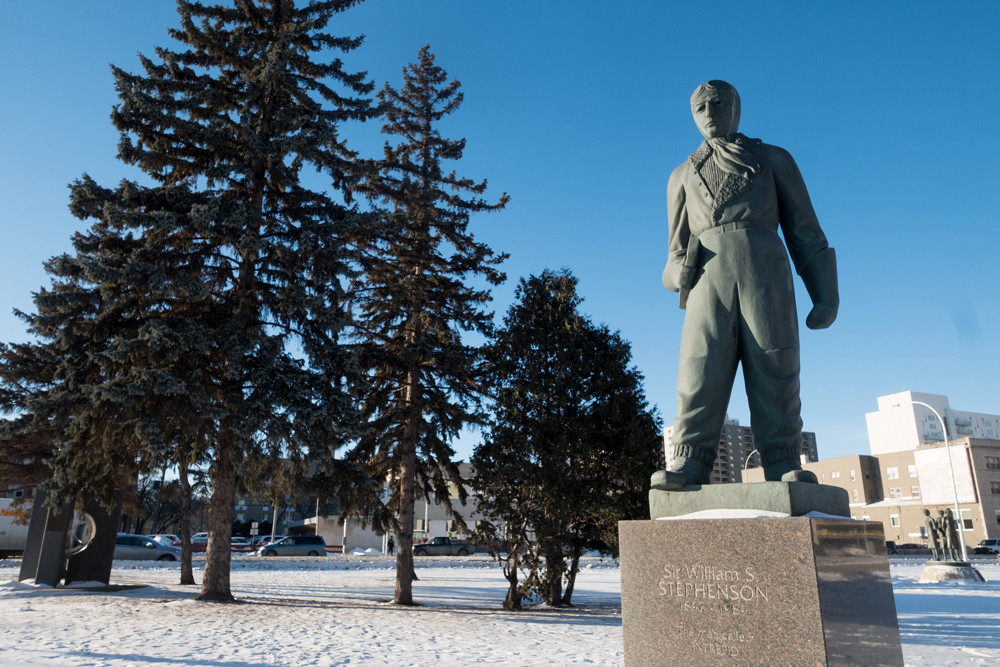
Eight months later, Streisand exploded to stardom with her role in I Can Get It for You Wholesale on Broadway. On a February 1963 The Tonight Show appearance, she told Johnny Carson that her feelings about Winnipeg were also mixed.
“(I worked in) weird … not weird, but in country places. Like in Winnipeg, Canada in Manitoba. Now, this was a beautiful nightclub. Three floors and very posh. Except, the people wore short, short shirtsleeves. They didn’t wear ties to come to the nightclub. It was very interesting.”
“Were they nice?” Carson asked.
“Um,” Streisand hesitated, before offering a noticeably high-pitched “yes.”
“The first night it was a little like, ‘What’s she doing?’ But after they knew who I was … they listened to me.”
Mork from Ork
When actor and comedian Robin Williams tragically passed away in 2014, the outpouring of grief unearthed a trove of local stories about his warmth and kindness. Many Winnipeggers shared their positive encounters with Williams while he shot the film The Big White here a decade prior.
Many of the anecdotes focused on Williams taking time to meet with fans, chatting with the owners of filming locations or telling jokes for children at nearby playgrounds. But perhaps the most-repeated story was how Williams went out of his way to surprise 80 high school students at the Fort Garry Hotel.
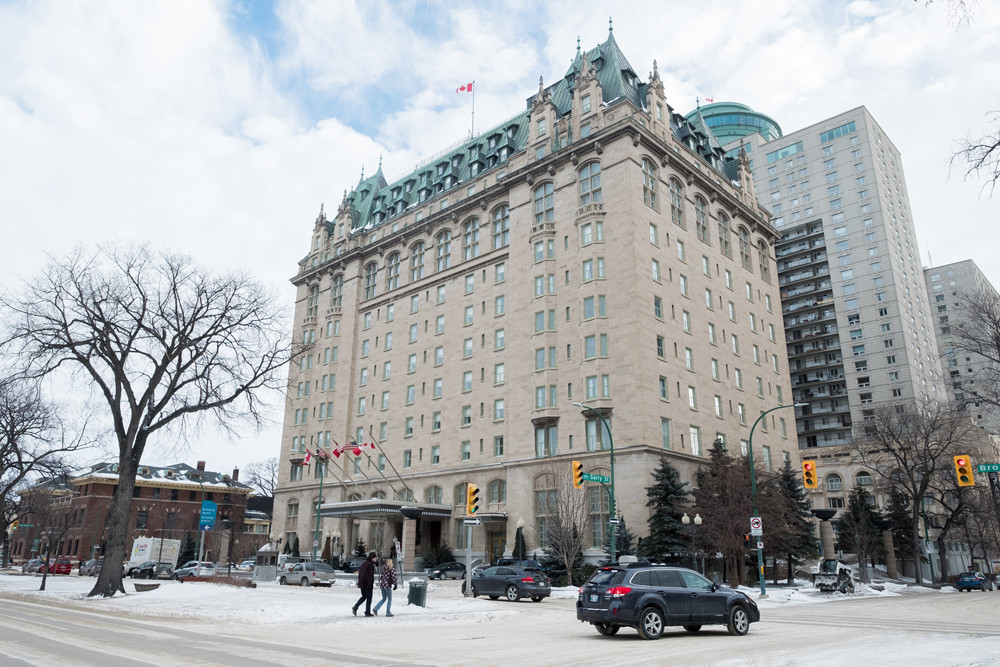
Robin Williams surprised 80 high school students who were attending a graduation at the Fort Garry Hotel.
The students were there for a Junior Achievement graduation celebration. Kenny Boyce, the City of Winnipeg’s manager for Film and Special Events, told Metro News how he and Williams met one of the kids’ moms in the elevator on the way from his hotel room to the film set. Boyce recalled offering Williams an out, but the actor was excited to meet the students.
“Forty minutes later, he had met everybody,” Boyce recalled.
Williams told jokes, signed autographs and spoke about his experiences filming in Winnipeg. Junior Achievement volunteer Steven Giros told the Free Press how much the gesture meant to everyone.
“For someone of his stature to drop in and make time for everyone – the people who were there are remembering that night.”
Kristen Stewart, wedding crasher
This past July, when brides Kirsten and Kayleigh Jennings made their way to Pizzeria Gusto for their wedding reception, they didn’t expect to find a movie star in attendance. But they soon found themselves partying with Twilight star Kristen Stewart and her partner, model Stella Maxwell.
Stewart, who was in town filming the upcoming JT Leroy, had recently attended an event which Pizzeria Gusto’s owner worked on. He asked the brides if Stewart and Maxwell could stop by for a few drinks. The couple happily obliged.
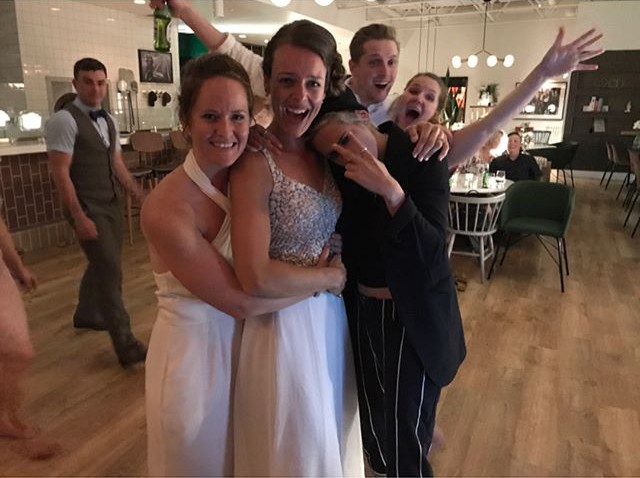
Kristen Stewart poses with the brides of a wedding she spontaneously attended last summer.
Kirsten Jennings told CBC that the twosome fit right in, drinking, dancing and requesting songs until 1 a.m.
“They looked just like two normal girls,” Jennings said. “They look a little Hollywood, but if we didn’t know who they were, I don’t know if I would have known.”
Despite this, the story still made international headlines. MSN called Stewart “the only acceptable wedding crasher,” while Vanity Fair reported the story with the headline, “Kristen Stewart Crashes Wedding to the Delight of Bride’s Aunt Linda.”
Published in Volume 72, Number 14 of The Uniter (January 18, 2018)

